Parrot
Parrot a group of hook-billed, large-headed, often brilliantly coloured birds of the order Psittaciformes. They have long tail feathers. The group has the ability to mimic speech, and includes the familiar parakeets, lovebirds, and budgerigars, as well as the larger macaws, Amazon parrots, lories, cockatoos, etc. Its tongue is fleshy and cylindrical.
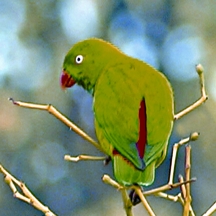 |
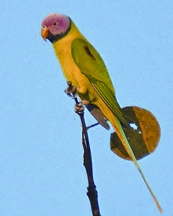 |
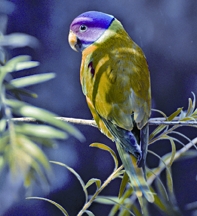 |
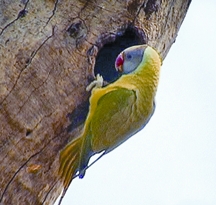 |
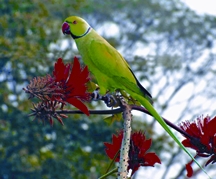 |
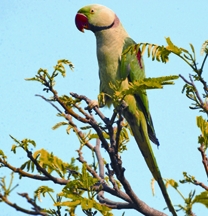 |
Parrots and their relatives have powerful bills for eating fruits and seeds, which they also use to manoeuvre themselves through branches. The upper jaw is hooked over the front of the lower, and is movable on the skull. The first and fourth toes are directed backward, a tree-climbing adaptation that permits these birds to grasp food, as if 'by hand', and carry it to the mouth, a somewhat amusing trait not found in other birds.
Most species nest in tree holes. The eggs are incubated by one or both parents from 16 to 19 days in small species, nearly 30 in large species, following which the young emerges, usually blind and naked. The period of nest care is from two to three months, and the young are fed by regurgitation. This long period of parental care may be related to the large brain size, which requires a longer period of development before the young bird acquires motor patterns enabling it to care to itself. This large brain is certainly associated with the parrots' remarkable ability to learn a complex sequence of tricks or an astonishing vocabulary with the same ease.
Many parrots live extraordinarily long lives, often longer than 50 years. The first parrots known to civilization were apparently Indian parrots brought alive to Aristotle about 328 BC by his pupil Alexander. The best talkers are the African grays, but the Amazons are good, though inclined to be too harsh and noisy. Known from ancient times, parrots, have always been popular as cage birds because they are amusing, often affectionate, easy to keep and astonishingly imitative of many sounds, including human speech. Numerous flocking species of parrots feeding on fruit and grain can become serious economic threat to agriculture and fruit raising. On the other hand, they destroy many weed seeds. The export of parrots for cage bird is an important industry.
There are about 350 species of parrots, most live in the tropics and subtropics of the southern hemisphere, a few occur in India and Central America. Bangladesh has six species, of which Alexandrine Parakeet is critically endangered. Following are the parrots of Bangladesh: Latkan/Lejkata Tiya (Vernal Hanging Parrot, Loriculus vernalis); Tuta (Red-breasted Parakeet, Psittacula alexandri); Chandona/Baro Tiya (Alexandrine Parakeet, Psittacula eupatria); Kalomatha Tiya (Grey-headed Parakeet, Psittacula finschii); Tiya (Roseringed Parakeet, Psittacula krameri); and Lalmatha Tiya/Hiramon (Blossom-headed Parakeet, Psittacula roseata). [Md Anwarul Islam and Sharif Khan]
